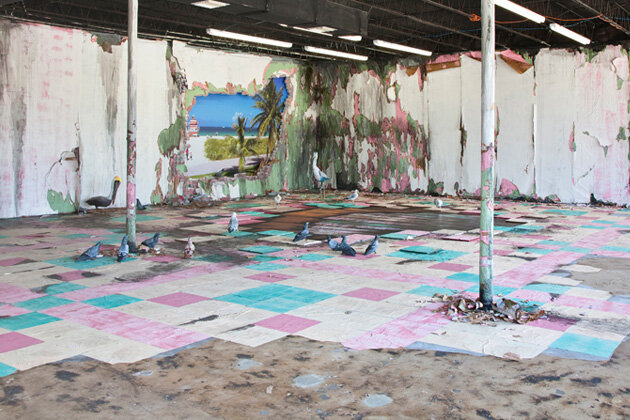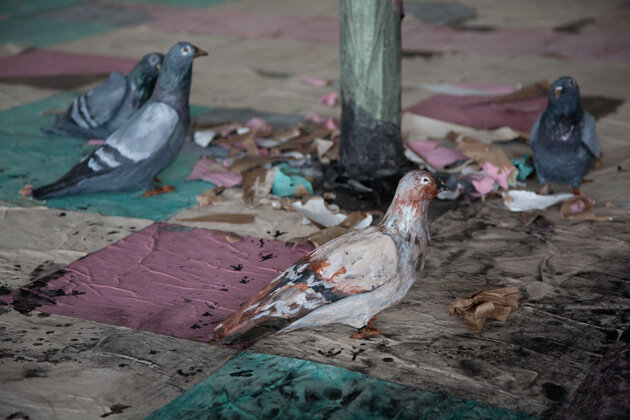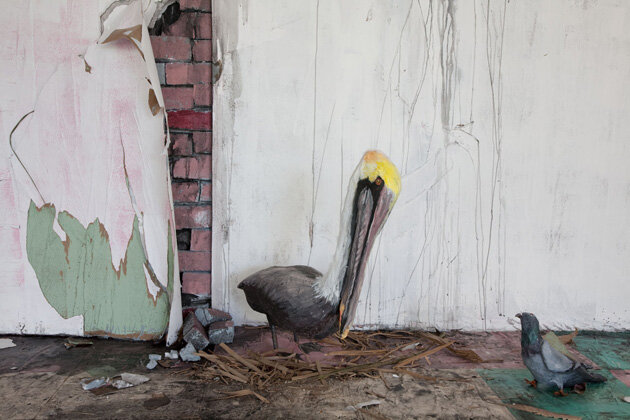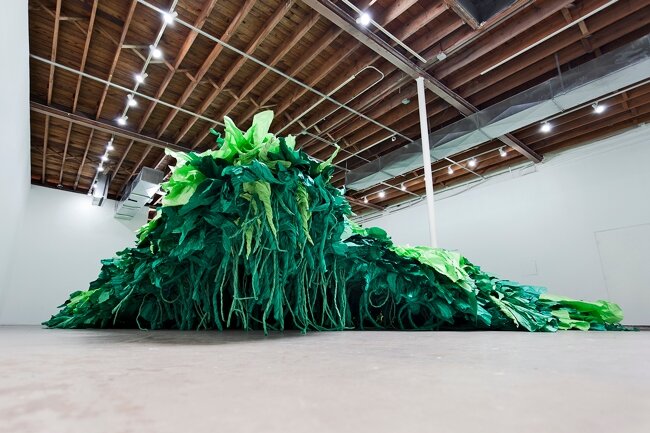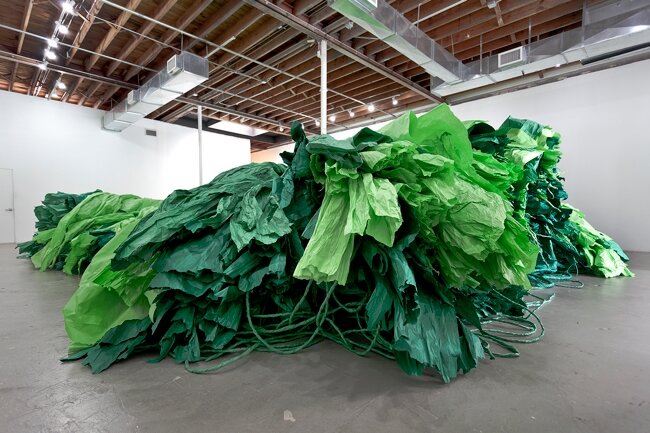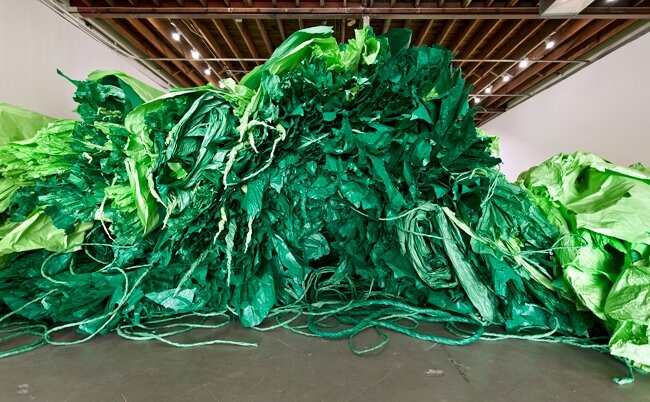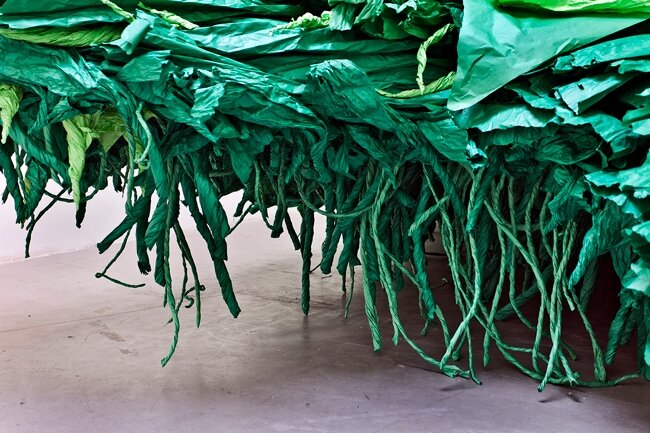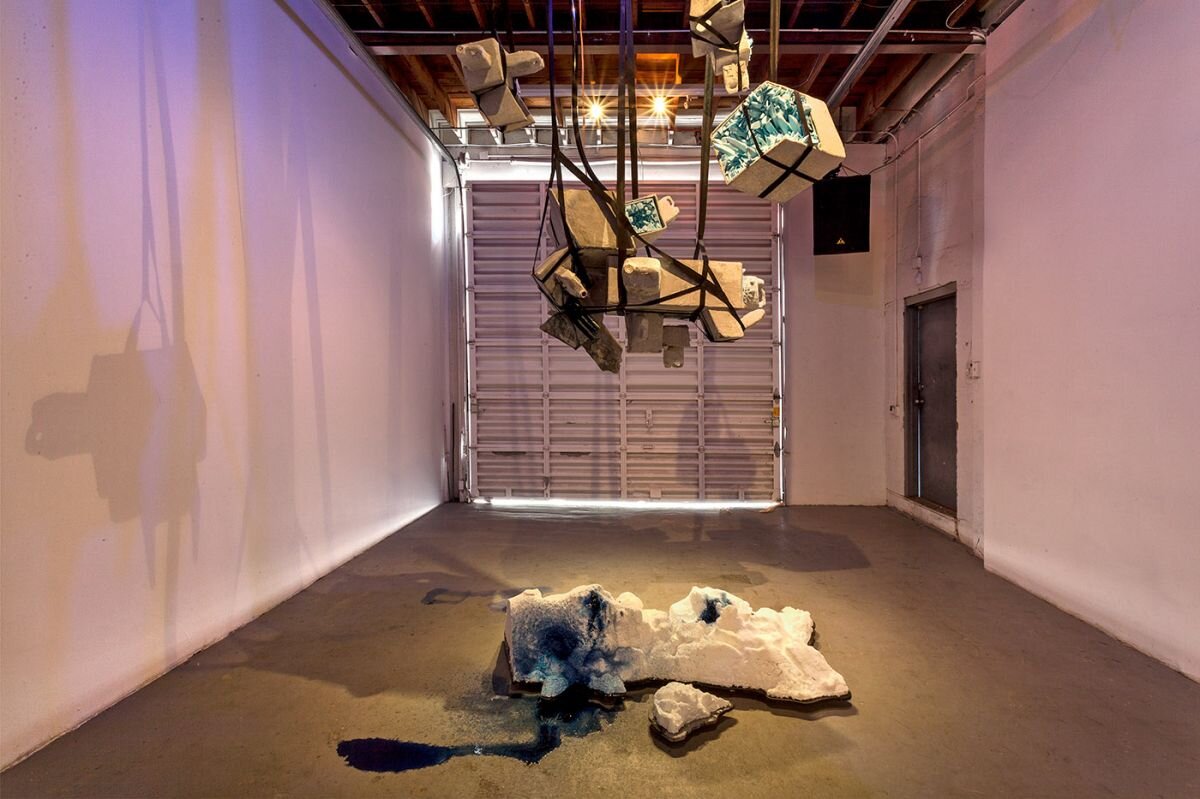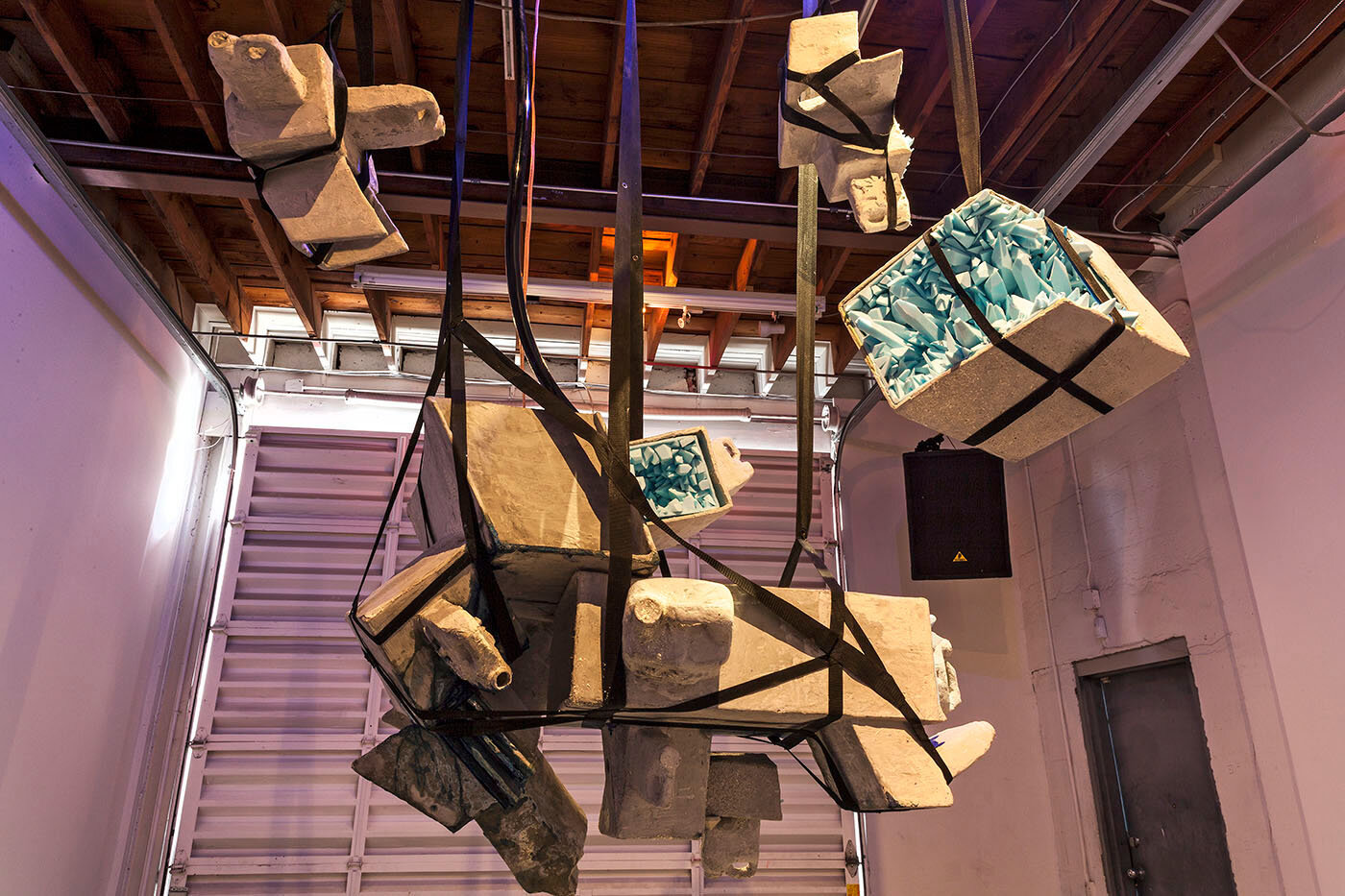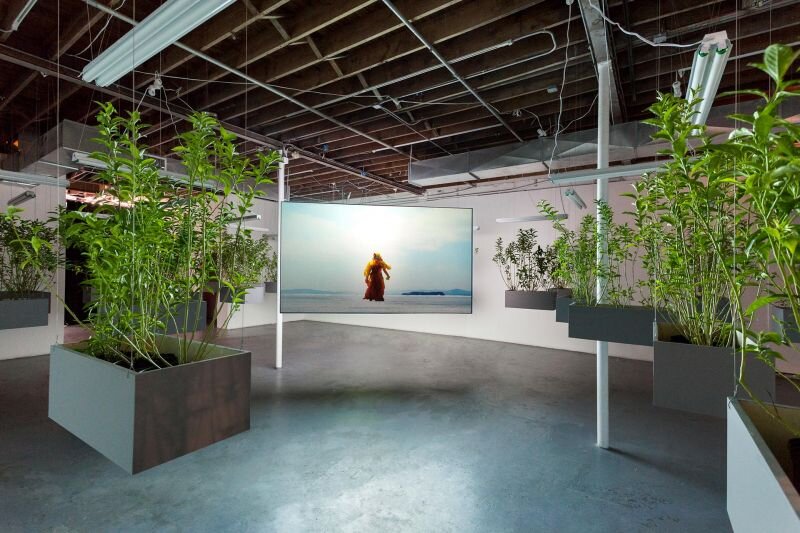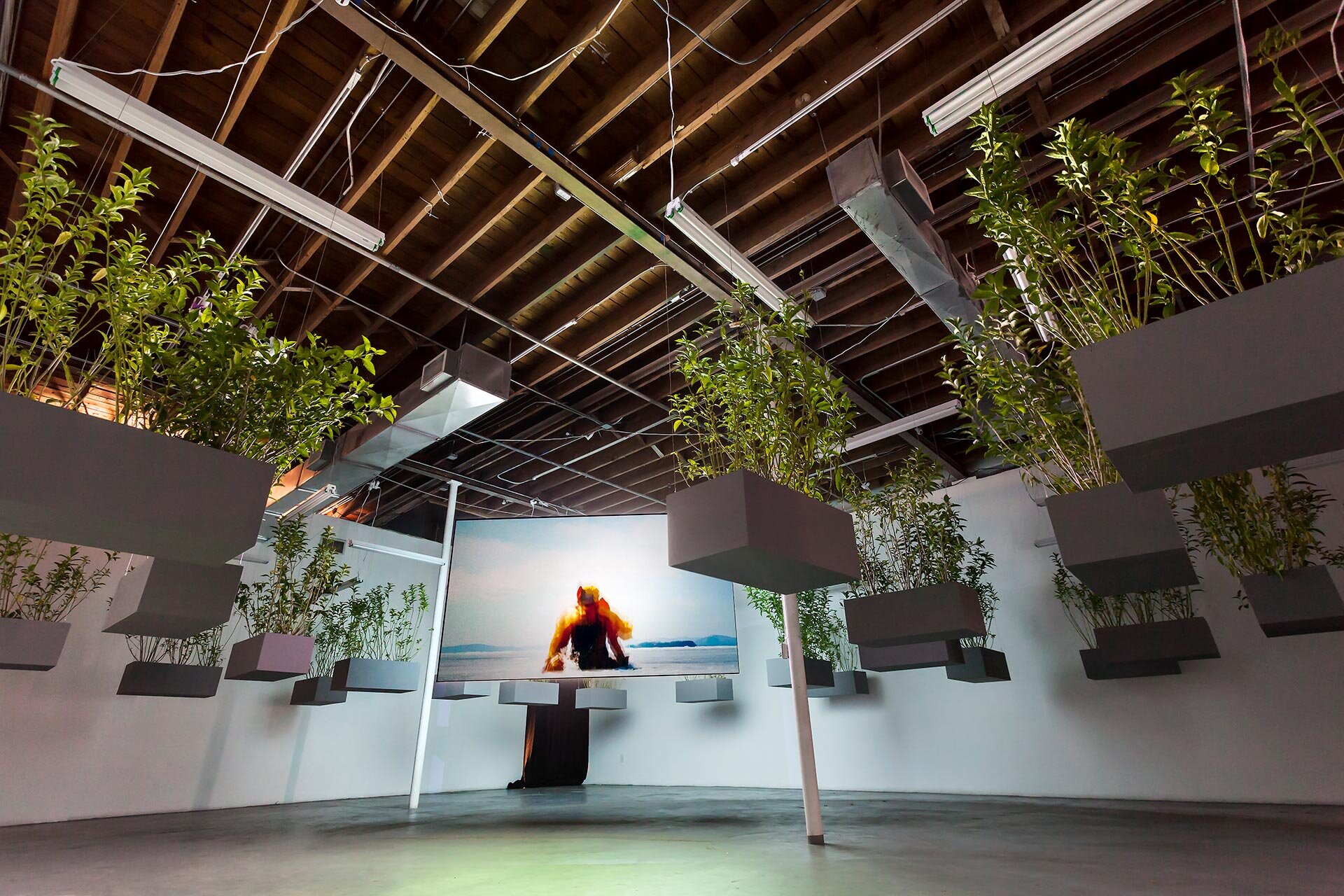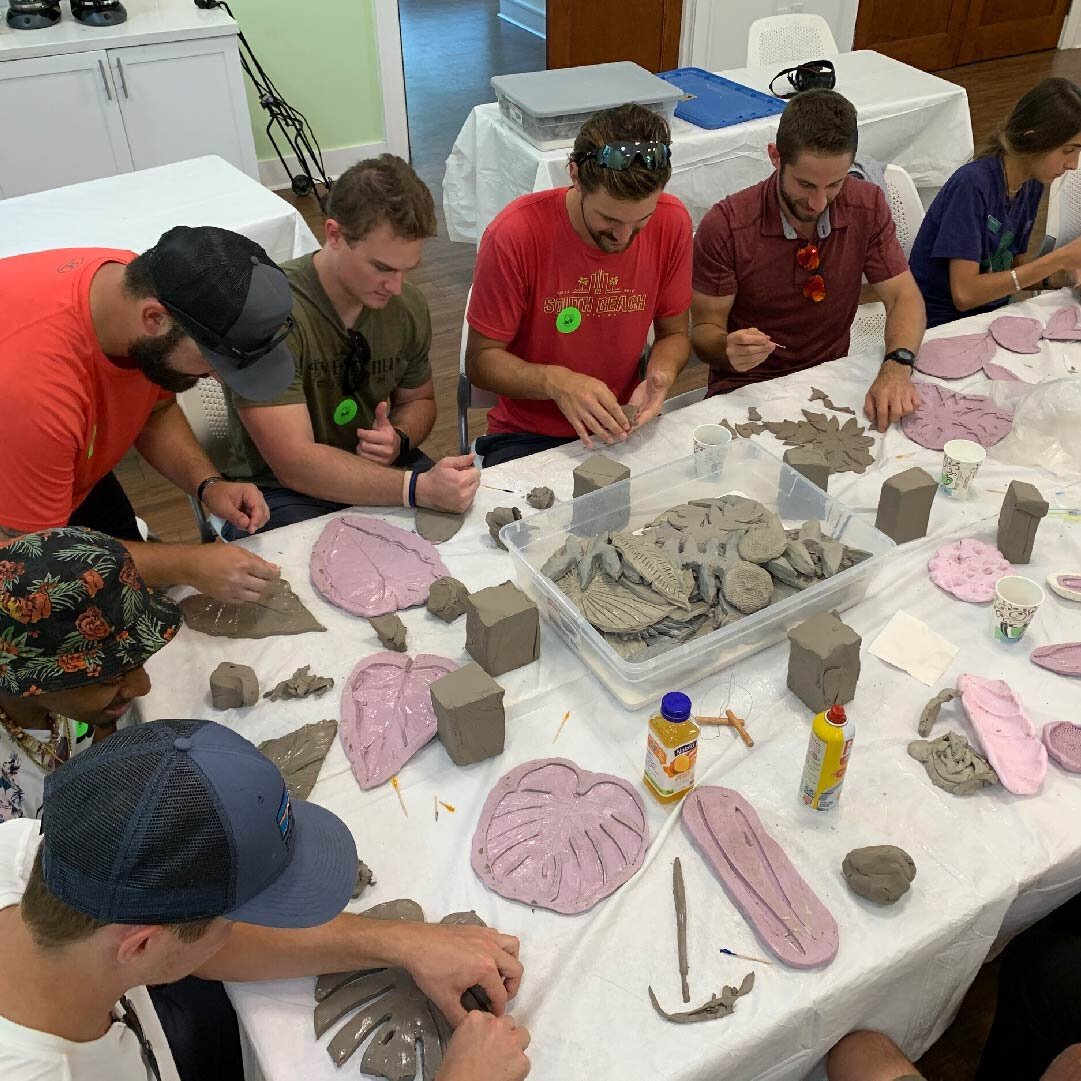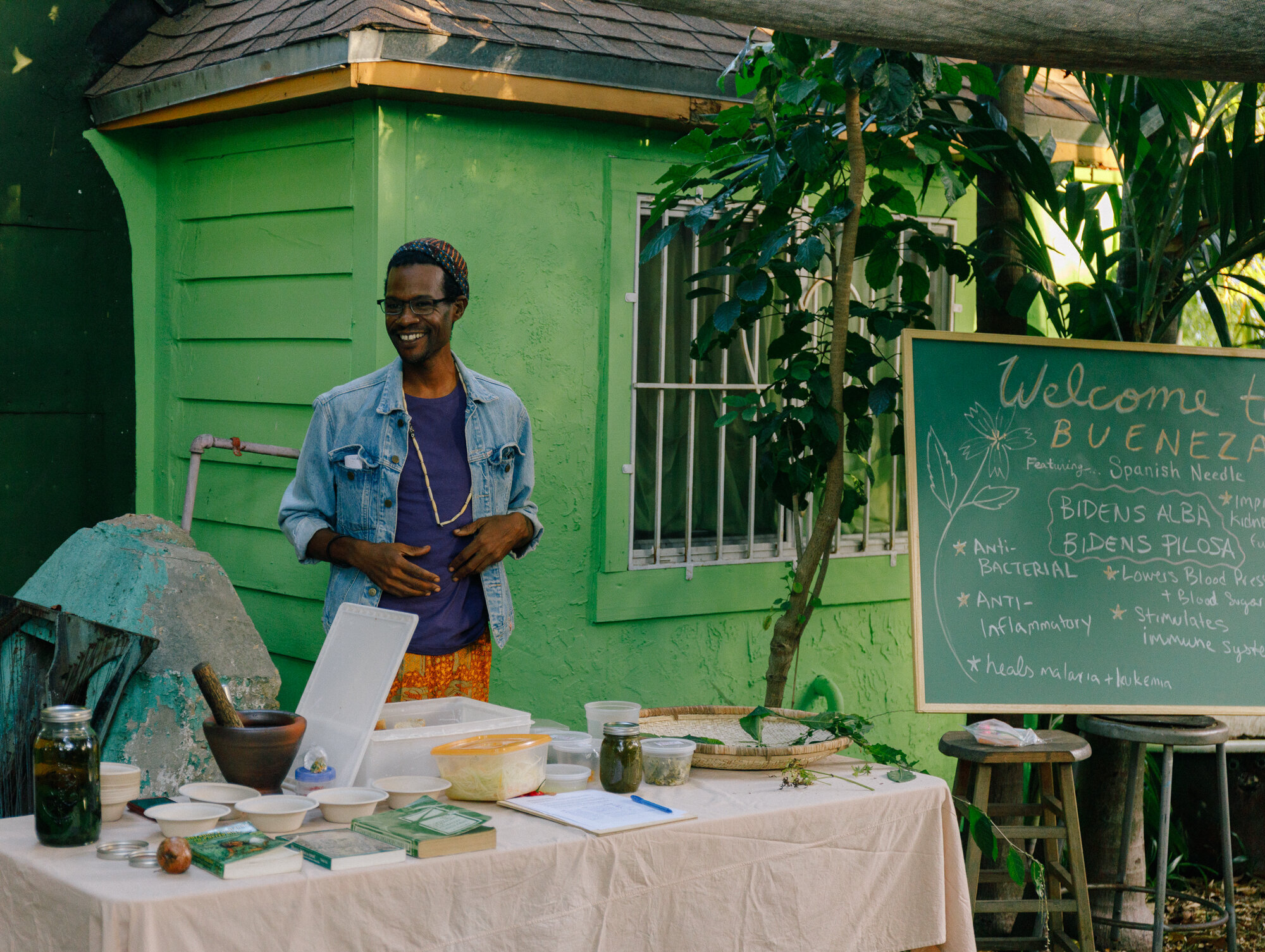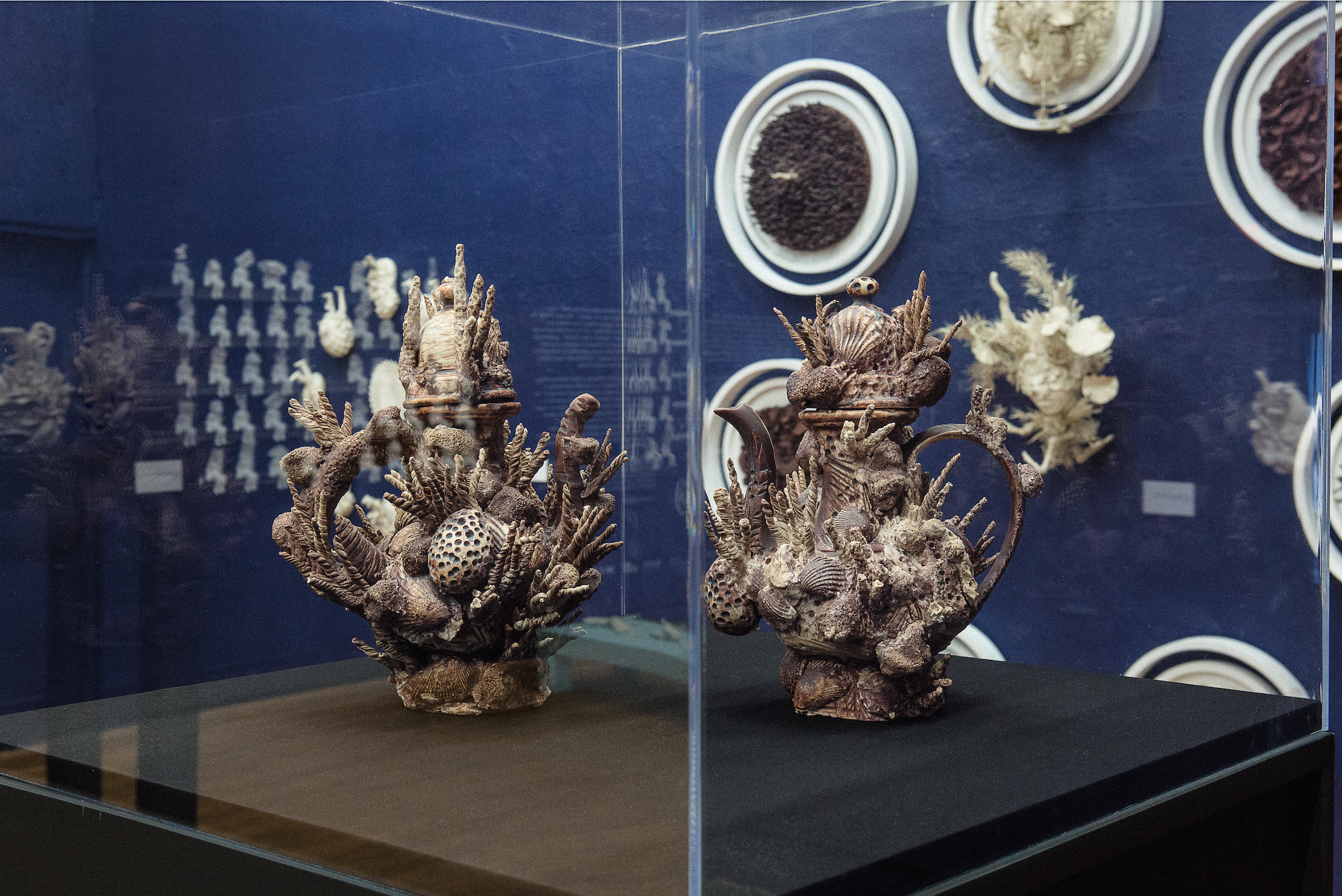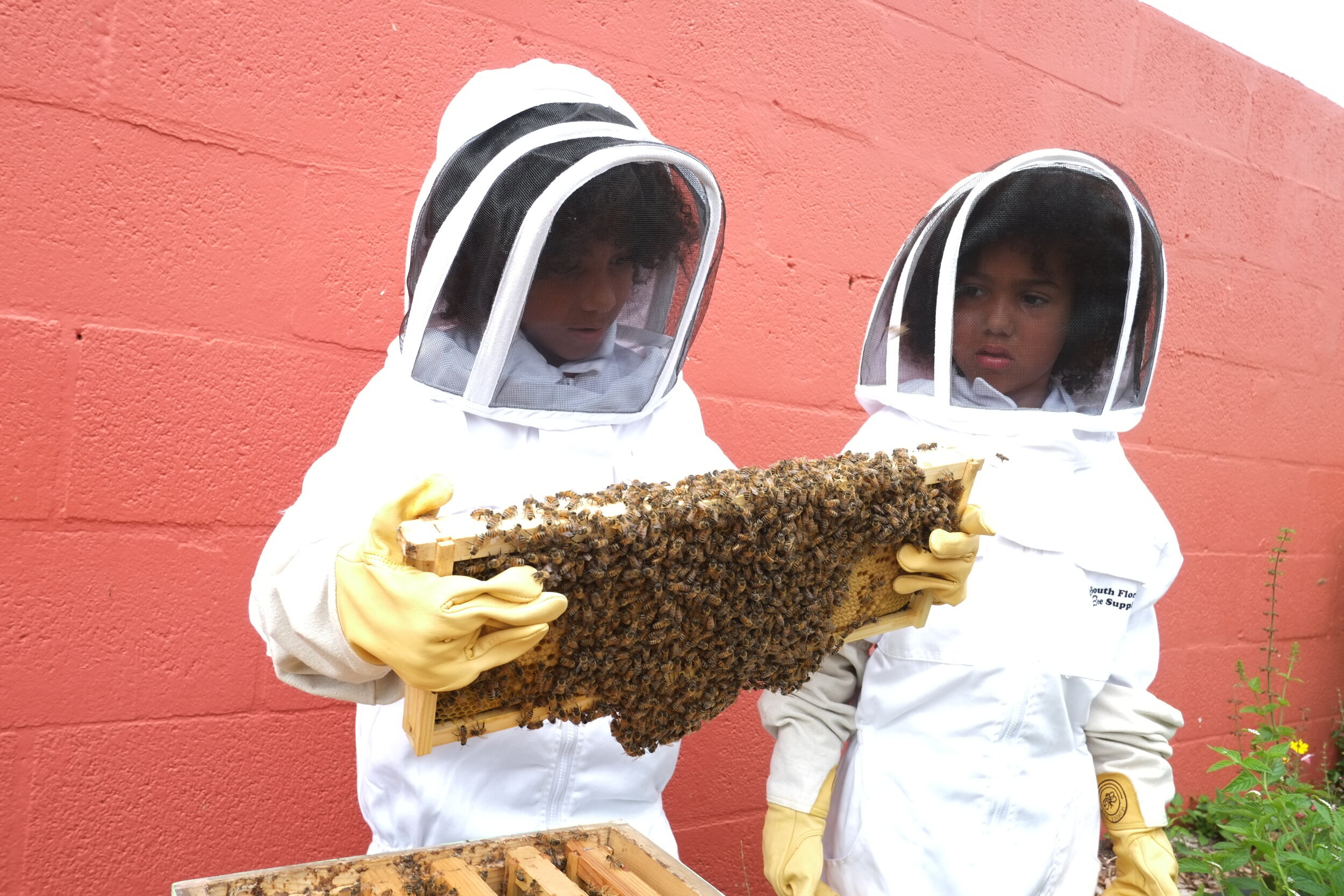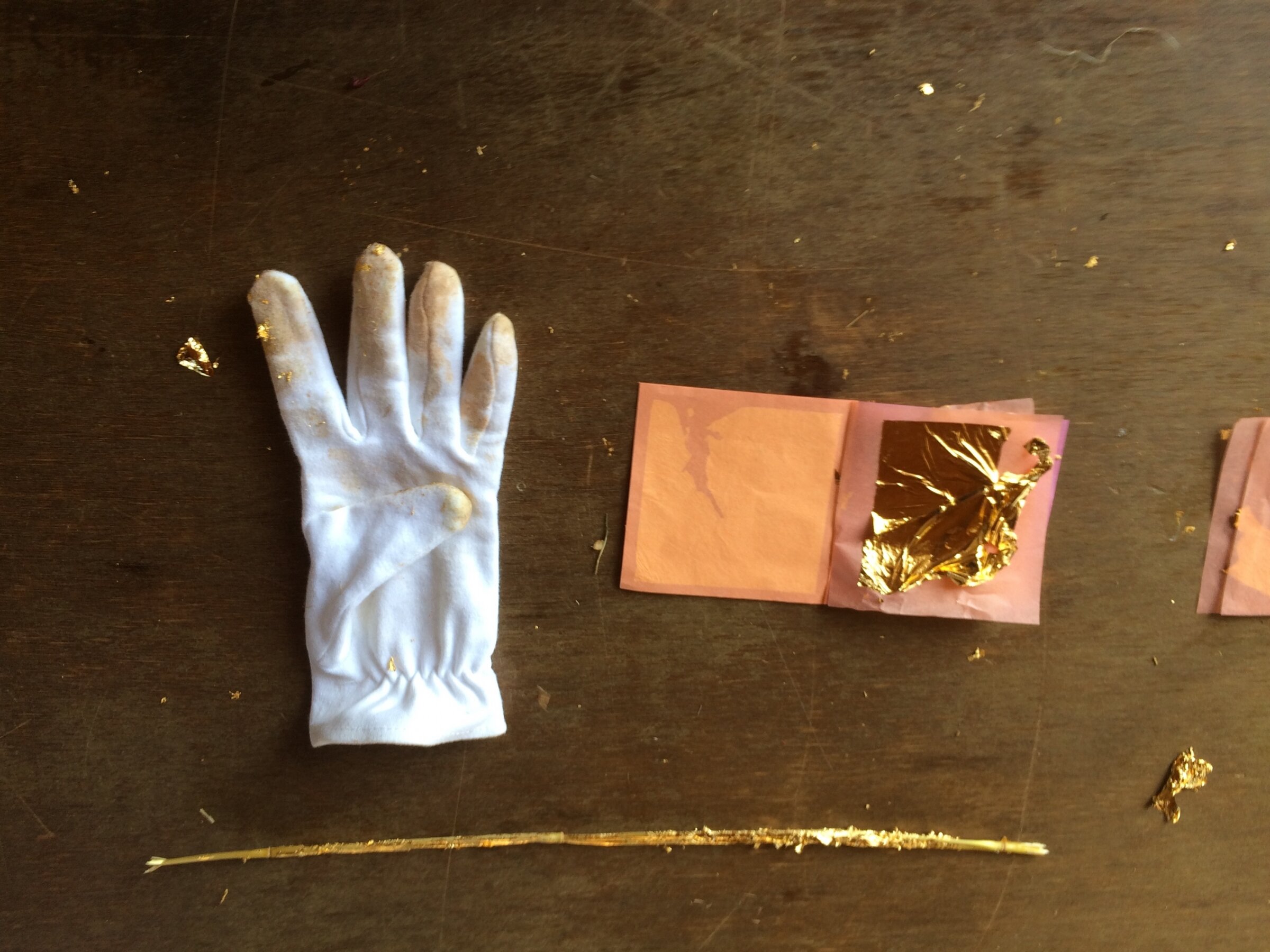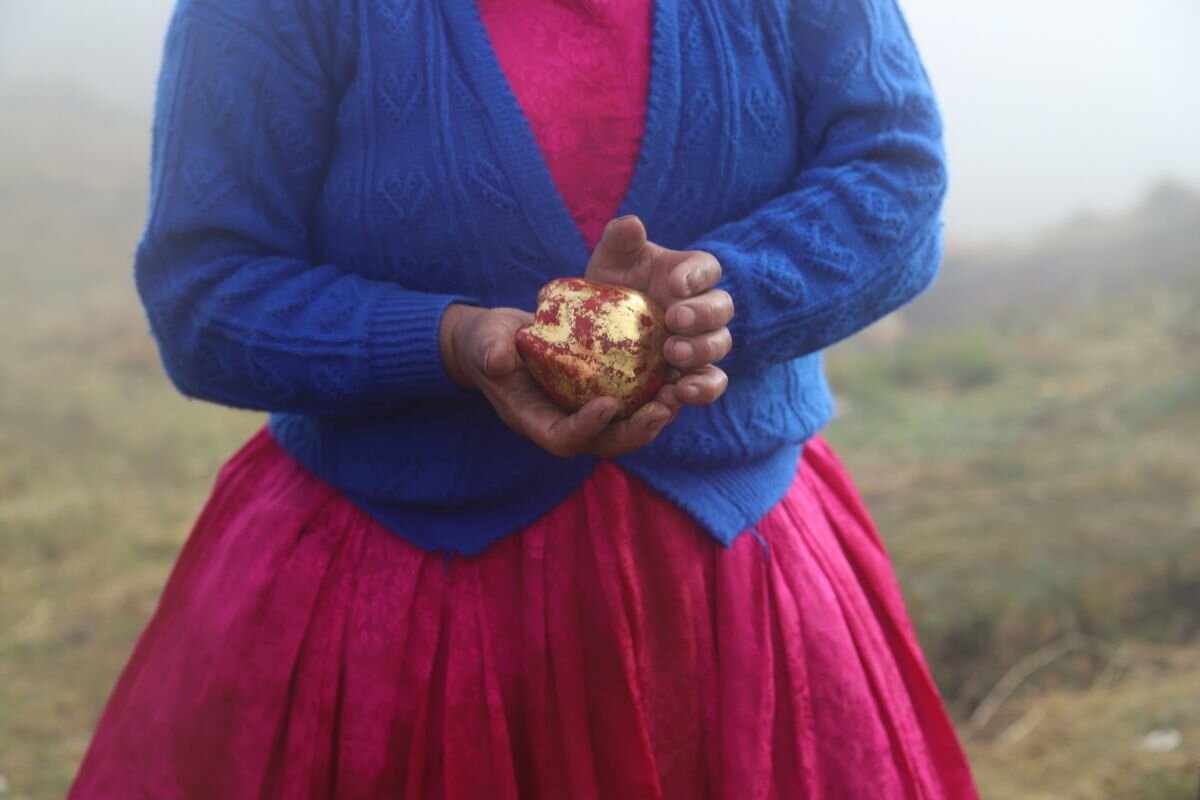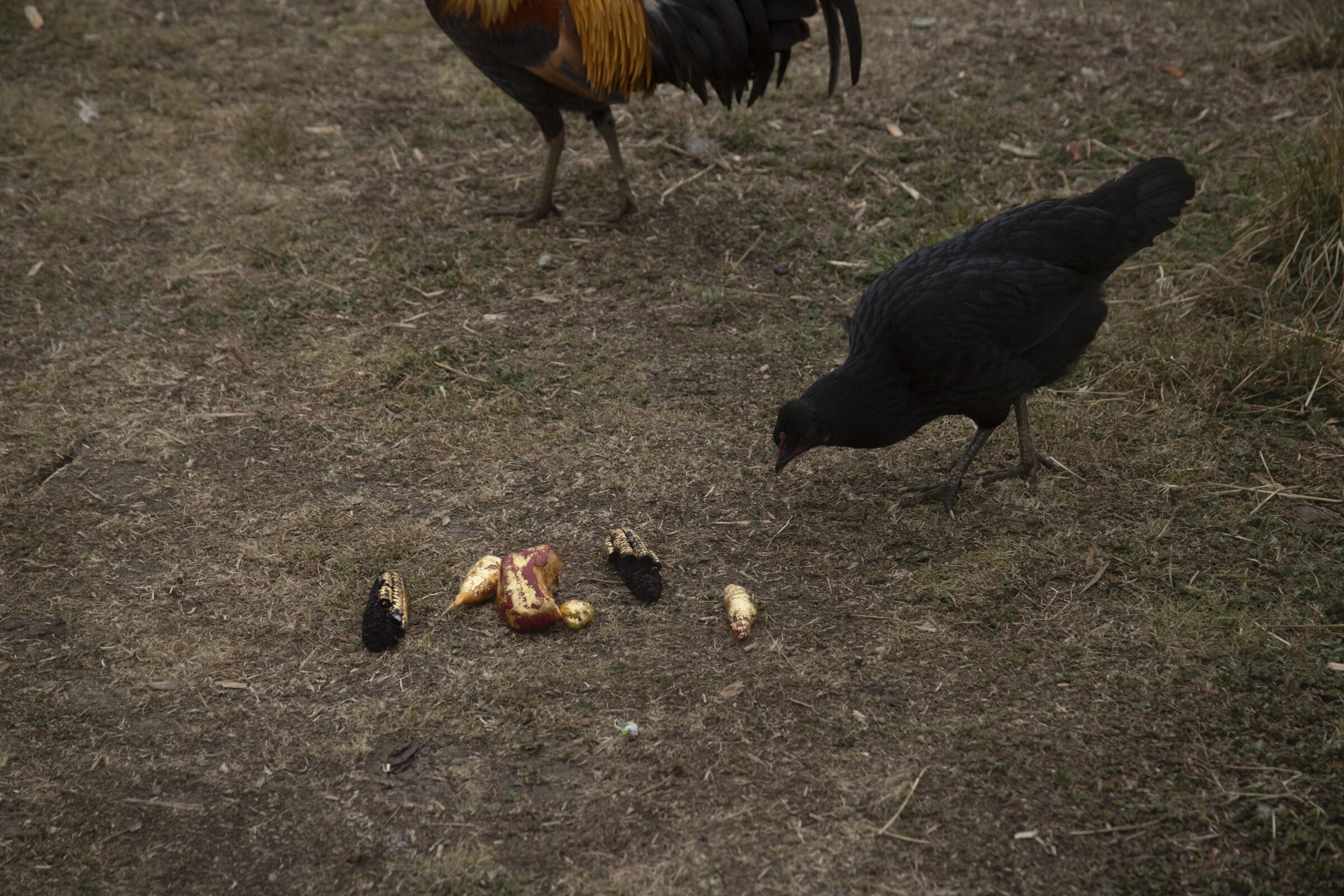Looking Back: Earth Day Edition
In honor of Earth Day 2021, we’re throwing it back to some of the exhibitions at Locust Projects that were inspired by nature, climate change, Miami’s ecosystem, and more. Look back with us and try to spend some time outside today appreciating our natural world and how you can help preserve it.
In Valerie Hegarty’s 2010 site-specific installation, Breakthrough Miami, illusionary holes in the space created fabricated portals to the exterior environment where wildlife seemed to be creeping in along with new views to the Miami shoreline. The work shared a visual affinity to the work of Gordon Matta-Clark, who famously removed sections of floors, ceilings, and walls in abandoned buildings. Instead of the heroic gesture of actually breaking through the architecture with a saw and sledge hammer, Hegarty humorously alludes to the physicality of this process through employing fragile materials such as foamcore, paper, paint and glue. The gallery is transformed into a quasi- abandoned space, but is in effect a deconstructed still-life painting.
In 2013, during Locust Projects’ 15th year anniversary, the New York-based collaborative duo Wade Kavanaugh & Stephen B. Nguyen presented their site-specific installation, Drawn from the Everglades. Known for undulating installations of twisted and gnarled paper that engulf spaces and surround the viewer, Kavanaugh and Nguyen created an immersive three-dimensional drawing based on their impressions of the Everglades, where they were artists in residence in February with the AIRIE program. Their practice focuses on the collaborative process itself, resulting in abstractions of the entangled mangrove roots, waving sawgrass, and muscular storm clouds of the Everglades waterscape. Listen to an interview with the artists in the video below:
Mia Feuer’s 2015 exhibition, Mesh, spanned three geographical sites — Miami and the Gulf Coast, Calgary, and the Arctic Circle. Working with a 3D scanner for the first time, Feuer created a sculpture and sound installation that explored how these three places are interconnected and enmeshed. More details in the video below:
In 2016, Antonia Wright’s exhibition, Under the water was sand, then rocks, miles of rocks, then fire, was the artist’s first film work presented within an ambitious large-scale site-specific installation, it was specially designed to engage the senses and provoke a heightened emotional state in the viewer.
For the duration of the exhibition, day became night in Locust Projects’ Main Gallery, so that Wright could enclose the viewer within a maze of flowering Night Blooming Jasmine plants. Upon entering through a curtain, the viewer was immersed in darkness. They detected the scent of jasmine flowers, and experienced a specially composed soundscape by experimental jazz musician and composer Jason Ajemian. The viewer negotiated their way through the maze of plants, which were suspended from the ceiling in boxes, and moved towards the light emitted by the film projected at the center of the room. Reenacting an event from her youth, Wright – dressed in a flame-colored suit – crosses a frozen lake, eventually falling through the ice into the water. Through the duality of light and dark, the exertion of control over elements from the natural world, and the reenactment of an incident from her life, Wright considers the fragile border that separates life and death. (Images below by Zachary Balber, video courtesy the artist).
In addition to our exhibitions at Locust Projects, many of our WaveMaker Grants recipients have created projects at the intersection of art and nature. In 2018, Morel Doucet’s exhibition, "White Noise: When Raindrops Whisper & Moonlight Screams in Silence," addressed issues of socioeconomic disparity, colorism, and the demise of our coral reef systems and marine biodiversity through climate change (read more here), and Danielle Bender’s project, “Public Hives,” promoted community pollinators by placing beehives in neighborhoods and parks in Miami, creating greater access to educational opportunities while presenting with the arts in mind (read more here). And in 2019, Lauren Shapiro’s “Temporary Terrains,” was an ephemeral clay installation and social practice project in partnership with the Fairchild Tropical Botanic Garden (read more here), and Buenezas’ “Edible Plant Guide of Little Haiti” consisted of a series of workshops, panels and activities addressing the topic of naturally growing local weeds and their ancestrally known, but unfortunately forgotten benefits (read more here).
Moving into the virtual realm during the COVID-19 pandemic, in April 2020, Locust Projects participated in the Common Field Online Convening to present the panel Art & Environmentalism from the Frontline. The panel was moderated by Locust Projects’ WaveMaker Grants and programs coordinator Monica Peña and featured three Miami-based artists making waves through environmental activism: Franky Cruz, Cara Despain, and Misael Soto. Learn more and watch the full panel here.
Once we re-opened our doors in the summer of 2020, Christina Pettersson created a memorial space for her site-specific immersive installation, In the Pines, to pay homage and remember the original pine woods of South Florida and its historical figures and creatures, to which the artist is deeply connected. In transforming the space into a cemetery, the artist's intention was to invite viewers to contemplate and physically connect with these historical narratives and each individual’s significance as if speaking with the dead themselves. Each tomb acted as a portal into a forgotten world, providing each visitor with a deeper understanding of South Florida.
The space was haunted by the wafting tune of In The Pines, a traditional American folk song of unknown origins dating back to at least the 1870s, famously sung by renown artists like Leadbelly and Kurt Cobain, and covered in the installation by the artist herself and Eli Peck. The melody surrounding the cemetery was accompanied by the soft crunching sound of footsteps, emanating from a projected video of the artist dressed in Victorian-era mourning wear, traversing the world’s last large swath of Pine Rockland forest within the Everglades National Park. Once the preeminent landscape of Miami, the film contemplates its disappearance. Visitors’ footsteps echoed the artist’s as they walked across Florida native pine mulch through the cemetery of handmade gravestones, surrounded by evergreen walls. All were encouraged to make grave rubbings to take home a piece of the exhibition in homage to figures from South Florida’s robust forgotten history.
Click here for the Field Guide to Christina Pettersson's Pines Cemetery at Locust Projects. View a 360 video tour with the artist here, and read a thoughtful, in-depth reflection about the exhibition, by Nicole Martinez, here.
Looking ahead: Jessica Segall: Reverse Alchemy on the Gold Coast | Exhibition opening at Locust Projects September 11 - November 6, 2021
A new large-scale site-specific installation by Brooklyn-based multidisciplinary artist Jessica Segall features newly-produced works based on the artist's research into reverse engineering gold. The exhibition questions and compares the value of gold and extractive capitalism against clean water and fertile soil.
The term “reverse alchemy” is a scientific process by which refined gold from the US mint is dissolved and restructured into new geological formations through chemical and mechanical processes. Jessica Segall began her research into reverse alchemy in 2019 through a collaboration with the Mining Department at the University of Utah, in which she produced a set of experimental stones and grew potatoes in diluted gold-water. Segall’s research was then exhibited in a group show in Lima, Peru in January 2020.
The project will cover the gallery floor with hardened lava flow, created using a lava furnace to melt rock into liquid form. A luscious garden of edible plants grows under UV light in dissolved gold-water, surrounded by large, procedural video projections of the process of dissolving gold. Stay tuned for more details!


